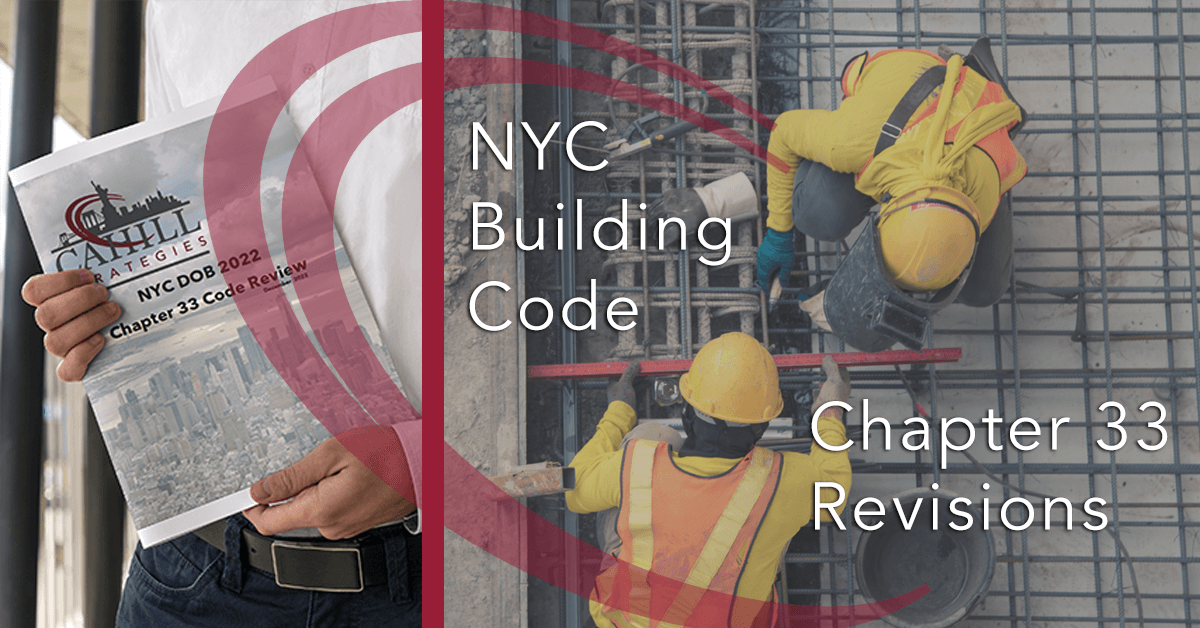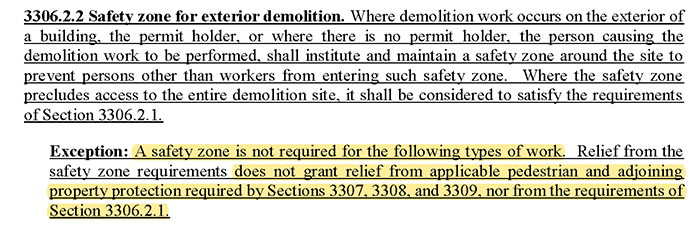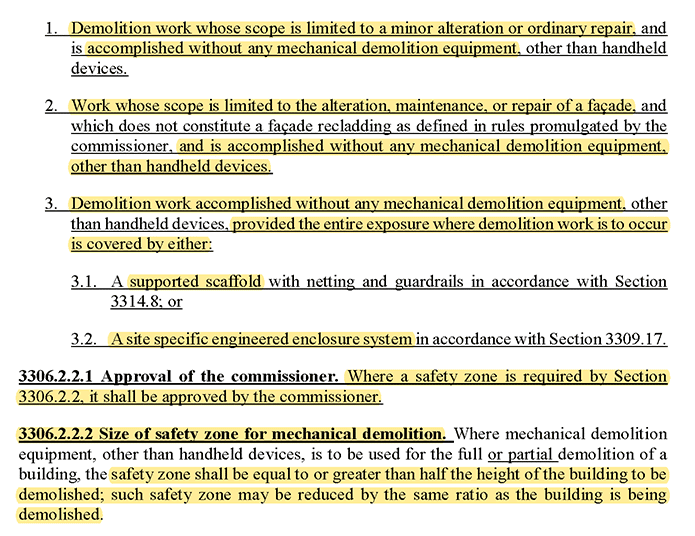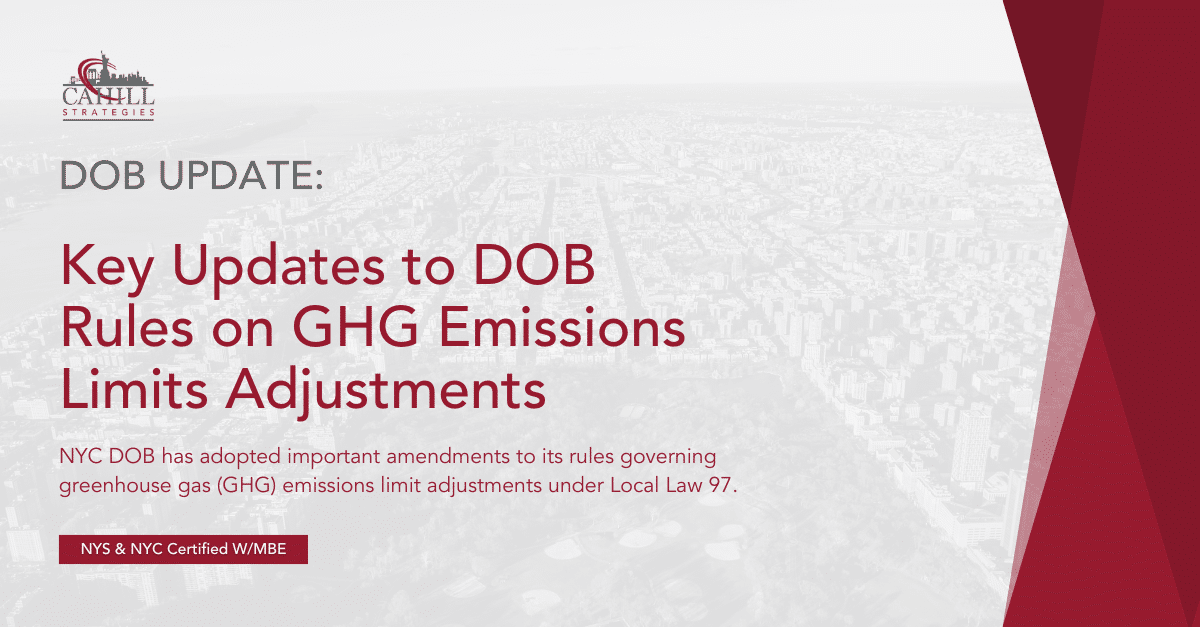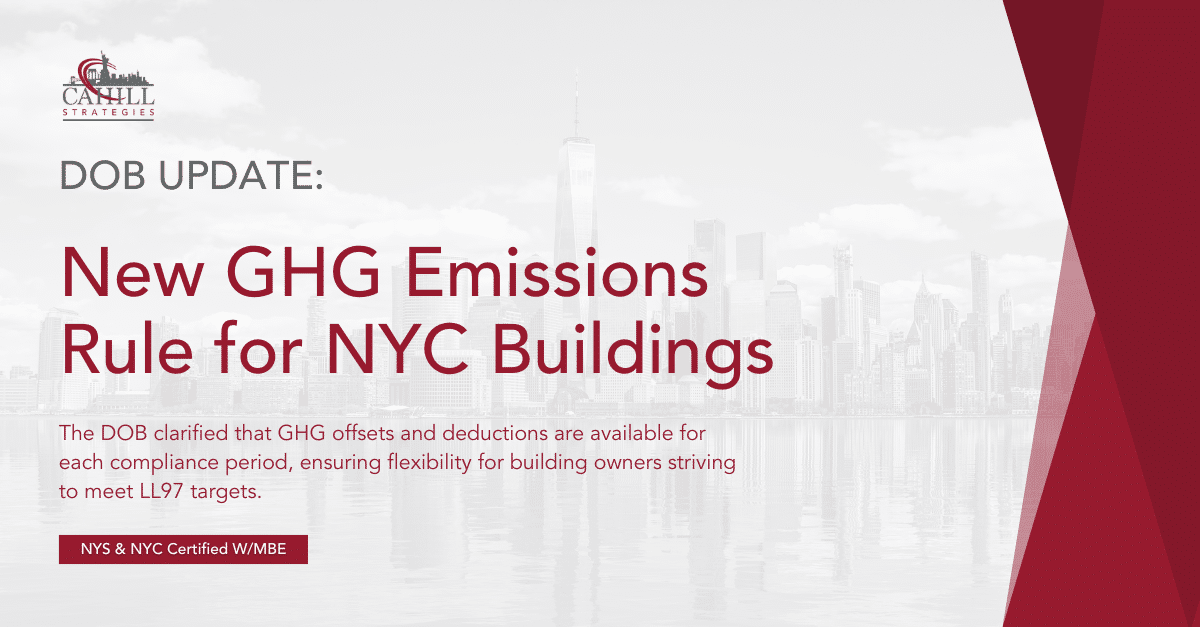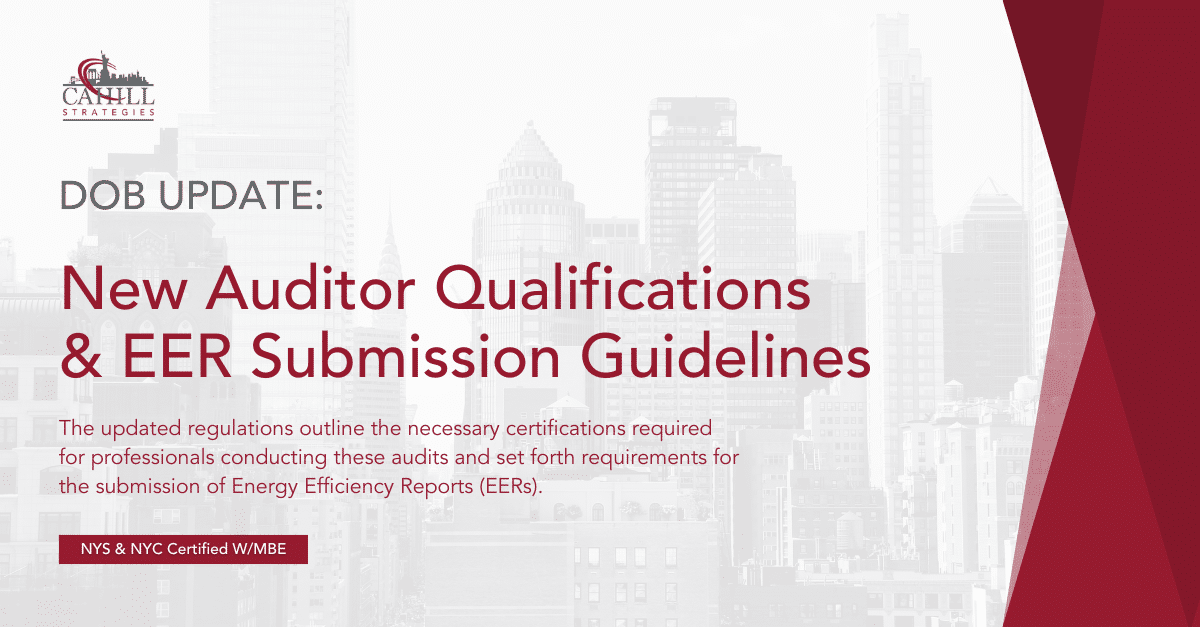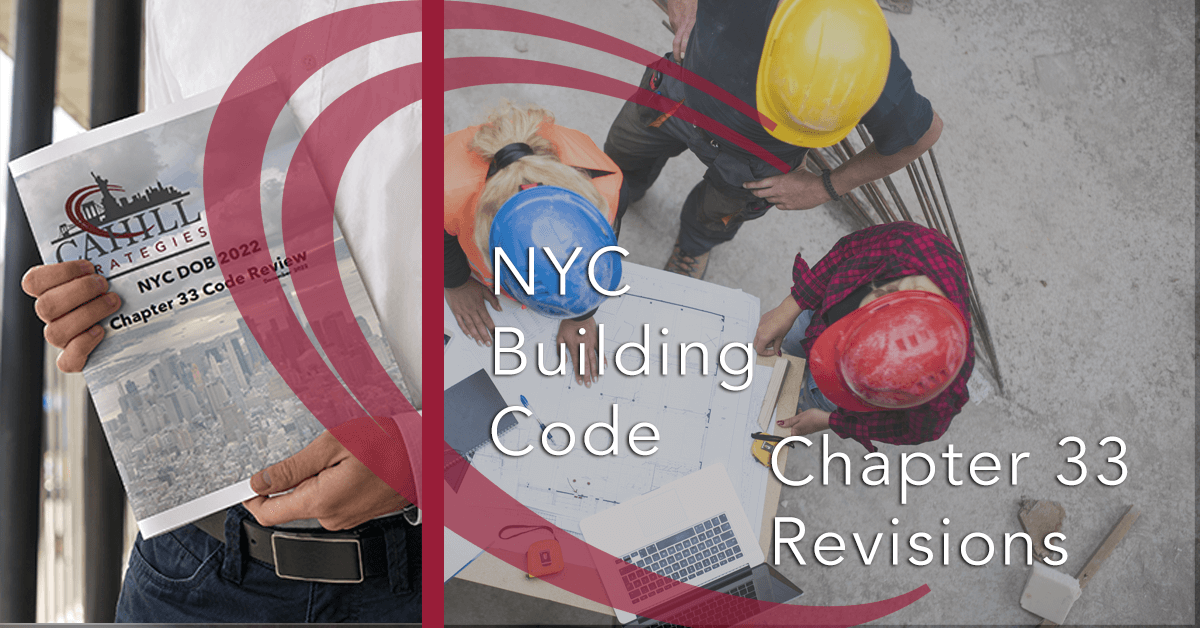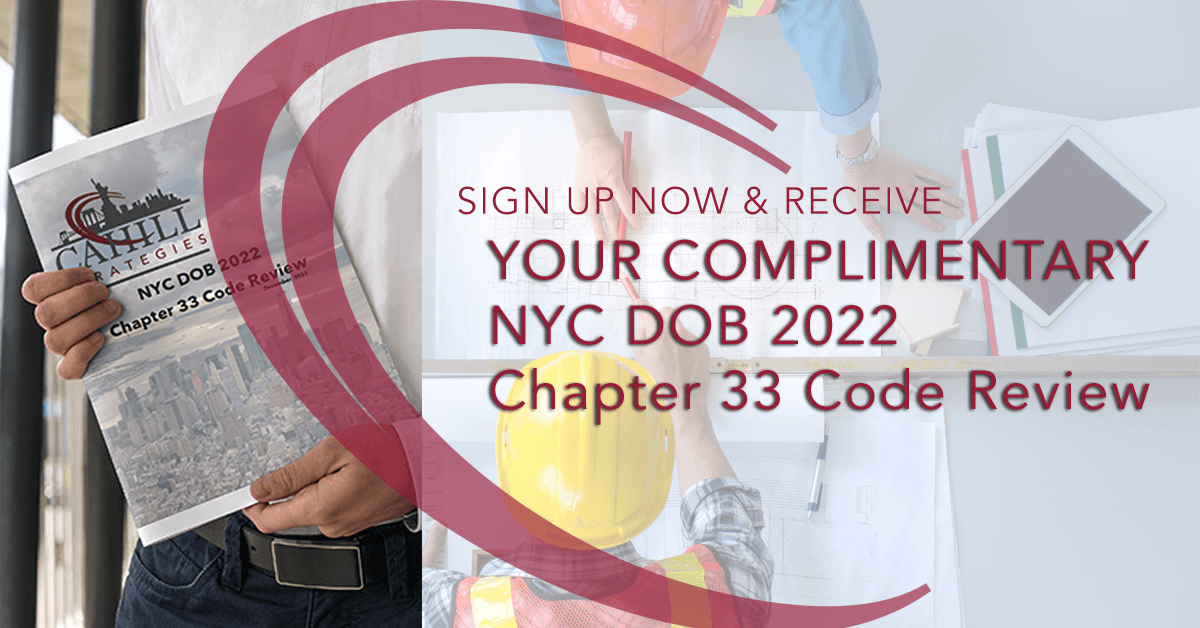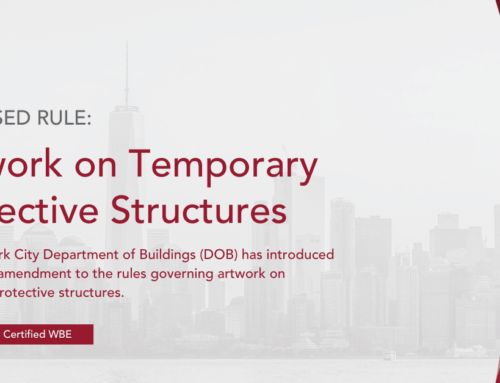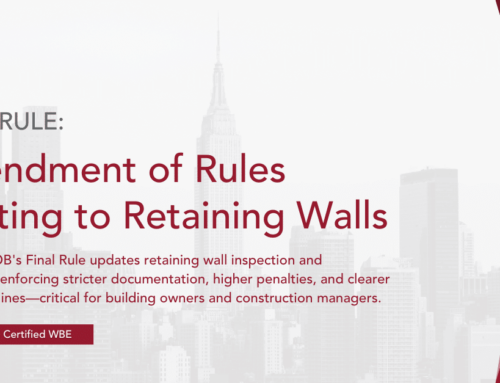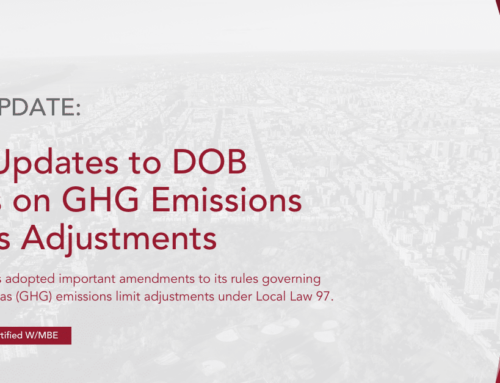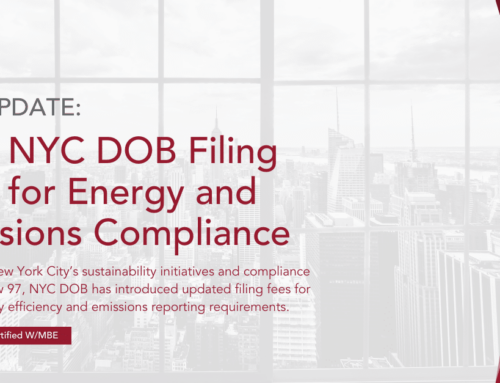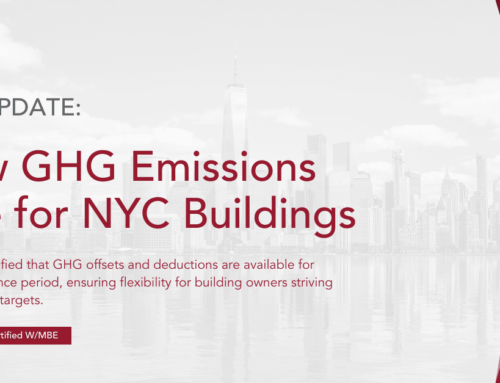Our Series on the 2022 New York City Building Code, Chapter 33, Safeguards During Construction or Demolition Continues…
Introducing BC 3306 – Demolition
The existing code sections pertaining to exterior demolition safety zones, required to mitigate material/debris fall hazards to the public, have been revised and include several exceptions. The changes are relatively minor.
The safety zone prevents unauthorized persons from entering the demolition area. The safety zone does not pertain to authorized demolition workers, though such workers would still be covered under OSHA’s broad material fall hazard mandate.
The exceptions to the requirement for a safety zone apply only to minor alterations/ordinary repairs (including façade repair and maintenance) performed without the use of mechanical demolition equipment, except handheld devices. For demolition beyond this scope of work, a safety zone exception is allowed if the exterior is enclosed with a supported scaffold and vertical netting or a “site-specific engineered enclosure”, provided no mechanical equipment is used, except hand-held equipment. This latter exception is new.
When a safety zone is required, it must be approved by the commissioner (illustrated on the site safety plans and, on the demolition, means/methods plans). Except for mechanical demolition, the size of the safety zone is not stipulated. For mechanical exterior demolition (using other than handheld devices), the safety zone is ½ the height of the building at any given stage of demolition. The safety zone can be contracted as demolition progresses toward grade, provided the zone remains equal to or greater than ½ the height of the building. This requirement for mechanical demolitions can prove difficult or impossible to comply with for high-rise demolition of buildings with street walls and perimeter walls on the lot line because there is no supported scaffold or site-specific engineered enclosure exemption for mechanical demolition, only for non-mechanical. Nothing has really changed in this regard, but DOB historically has waived the safety zone requirement when the site was cocooned with a supported scaffold and debris netting, even for mechanical demolitions staged within the building. But this policy was not codified this round. However, the contractor always has the option of filing a CCD-1 and requesting a variance.
It should be noted that an open pedestrian walkway protected by a sidewalk shed cannot be located within the safety zone, as the safety zone is required to prevent unauthorized persons from entering the zone.
You can find the Chapter 33 Safeguards During Construction OR Demolition General Section here…
You can find Local Law 126, authorizing the revisions of these building codes here…
###
In the coming days, we will share some of the most important aspects of these revisions that our industry friends and associates need to know about via our LinkedIn page. We suggest you follow our page so you won’t miss a single one. You can also join our email list using the form below to receive updates on this and all matters we share about New York City construction.
For clients, we’ll be consulting, advising, and holding video call de-briefs for some of the most important aspects of these code changes.
We have aso even developing a handy reference guide and digest – specially curated for our clients and associates.
Are you a Contractor – General or Sub? Temporary Construction Equipment Installer? Site Safety Manager? Site Safety Coordinator? Registered Construction Superintendent? Concrete Safety Manager?
Are you a Developer or Owner?
No matter what your role is, being aware of New York City’s latest construction code changes can help you to build safe and save you time and money. And as we all well know – ignorance of the rules is no defense when the inspector comes knocking. Not having a firm grip on the latest regulations can be very costly. Problems like this can be avoided when you have an experienced team combing through the new regulations and making relevant information available to you.
The new Chapter 33 construction code revisions cover the following areas:
- Manufacturer specifications, design, and capacity
- Safeguards and Maintenance of the Site
- Soil and foundation work
- Material placement and installation
- Demolition
- Protection of pedestrians
- Unenclosed perimeter protection
- Protection of adjoining property
- Requirements for the construction or demolition of major buildings
If you’re doing major work in New York City, every one of these areas is part of your day-to-day.
Here at Cahill Strategies, we assist developers, owners, general contractors and other industry stakeholders to understand the intricacies of the New York City code. We solve problems in this area every single day.
Follow us on our LinkedIn Page, Sign up for our email updates below.
A Note About the effective dates of the 2022 New York City Building Code, Chapter 33, Safeguards During Construction or Demolition:
- The effective date of the 2022 Building Code (Local Law 126 of 2021) is November 7, 2022.
- Buildings Bulletin 2022-007 (Building Bulletins 2022 – Buildings governs when an application is subject to the 2022 codes vs prior codes.
- For Chapter 33/Safeguards During Construction or Demolition, the trigger date for jobs requiring a Site Safety Plan (SSP) is the approval date of the SSP.
- For jobs NOT requiring a SSP submission or not requiring a SSP at all, the trigger date is the submission date of the underlying work application (new building, alteration, etc).
- For phased SSP submissions, at least one complete phase (such as the foundation phase of a multi-phase project) must be approved before 11/07/22 to vest under the 2014 codes.
- Application submissions must be “substantially” complete, meaning, no incomplete “place holder” filings should be submitted for the sole purpose of vesting under a prior code.
- For temporary construction equipment, including fences, sidewalk sheds, scaffolds, cranes, chutes, etc., the trigger date is the date of submission of the temporary construction equipment application.
Stay up to date! Sign up for Cahill Construction Updates!
Receive a Complimentary Copy of our NYC DOB Chapter 33 Code Review Book!
Cahill Strategies has developed a comprehensive guide to NYC DOB’s new Chapter 33 building code revisions, and we want you to have it in your back pocket!
When you sign up for our construction alerts, we’ll send you a complimentary copy of our book!
Cahill Welcomes Bob D’Alessio

As Cahill Strategies’ Director of Construction Code and Safety, Bobby brings an unparalleled level of knowledge and practical experience to our growing construction solutions practice area.
Helpful Links:
Contact Us:
New York Construction Solutions
Cahill Strategies has experience representing large general contractors, construction management firms, owners, and developers. A key to our success is our vast network of decision makers that we have the ability to reach on your behalf. Additionally, our team is involved in the legislative and regulatory processes at the Federal, State, and Local levels which affect the construction industry in New York State, New York City, and surrounding regions. We possess the knowledge of industry standards and trends, along with key relationships that will bring your projects to fruition. Read more…

